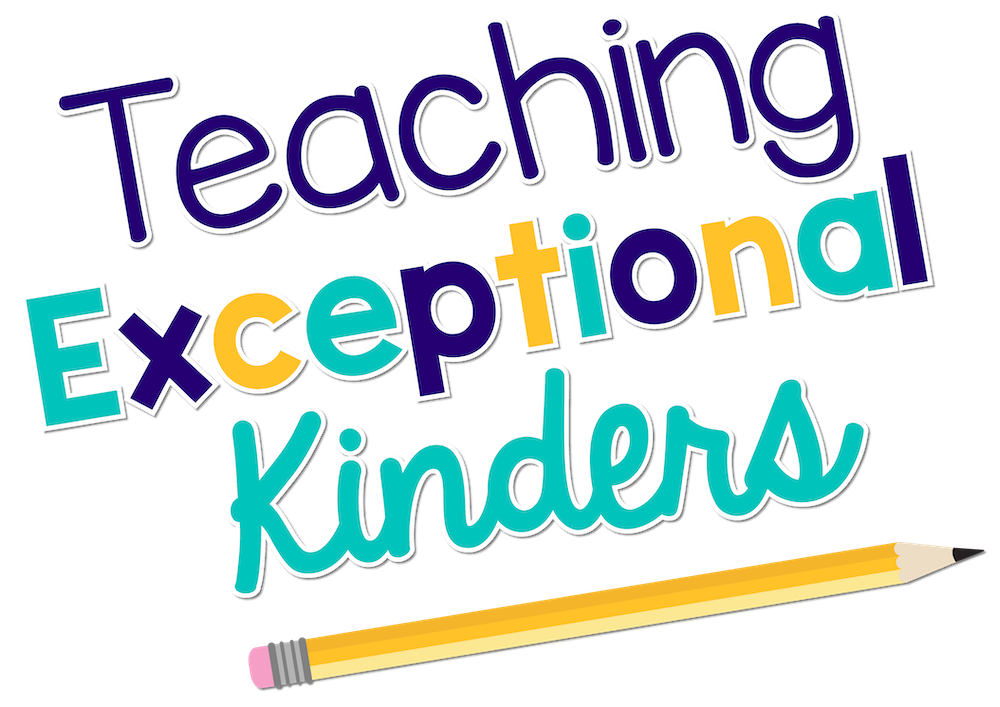How to Teach Problem Solving in Kindergarten
Teaching kids to be independent thinkers is a huge part of education. We want students to be able to solve their own “problems” without relying on adults for help. While many kindergarteners aren't ready for complex problem solving, we can teach them how to address their own challenges on a smaller scale. Keep reading for some tips on how to teach problem solving in kindergarten.
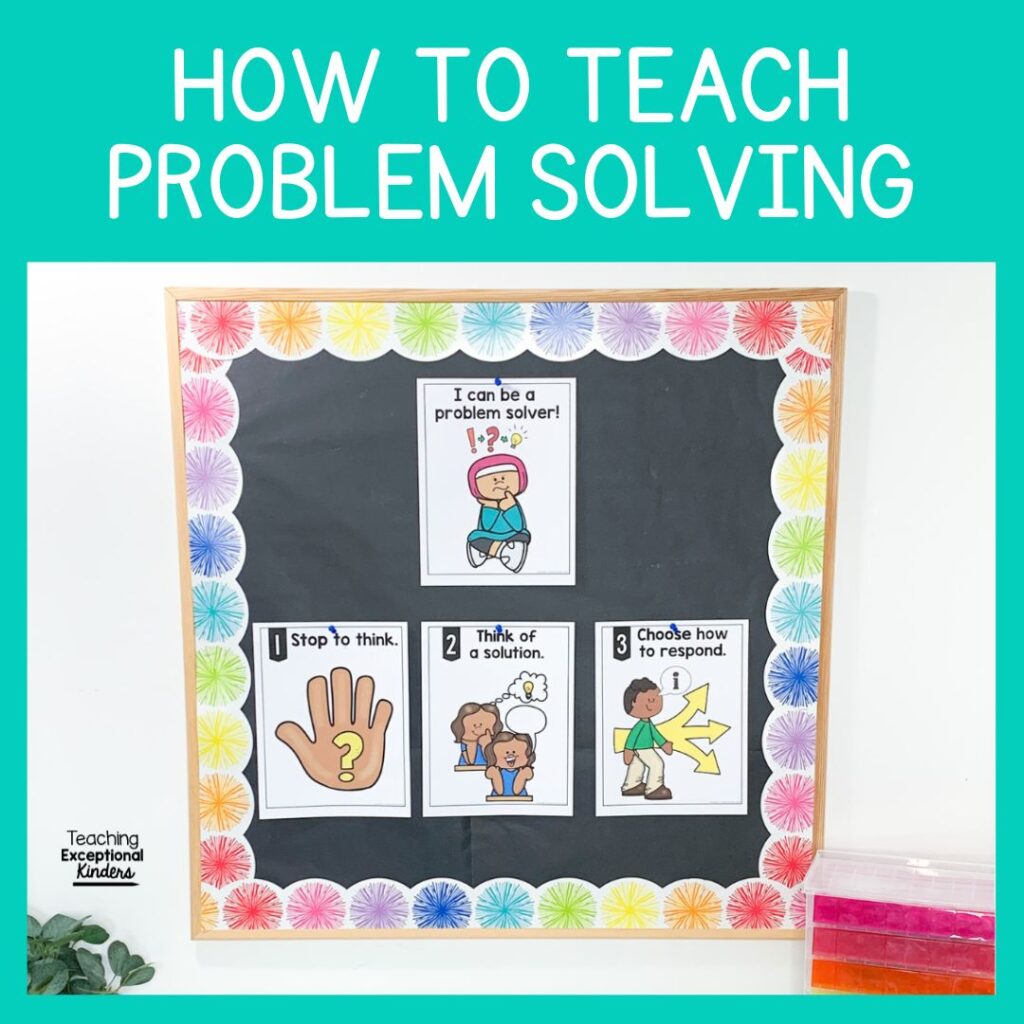
Tips for Teaching Problem Solving in Kindergarten
Learning how to problem solve is an advanced skill that people work on throughout their lives. We definitely shouldn't expect children to be perfect in this skill! However, your students can definitely start to understand that they can solve some of their small problems without adult intervention. Here are a few tips for how to teach problem solving in kindergarten.
1. Focus on Common Kindergarten Problems
When people think of solving problems in kindergarten, they often focus on conflict resolution between students. However, in kindergarten, there can be a wide range of challenges that students experience during the day. For young students, this often means turning to an adult for help.

Procedural – Kindergartners are very routine-oriented. When there is a small bump in the daily routines and procedures, the default is to ask the teacher what to do. These problems could include school supply issues or misplaced items.
Personal – Whether it’s untied shoes or complicated emotions, there are a variety of personal challenges that students experience throughout the school day. These could include personal injury, self-care challenges, and emotional regulation difficulties.
Interpersonal – Kindergarten can be a challenging time for students who are learning to interact with their peers! Students might experience problems related to turn-taking, making shared decisions, and working in groups. These are often the small problems that result in tattling.
2. Identify Your Preferred Solutions
Before teaching problem-solving skills to your students, take some time to identify the solutions that would be preferable in your classroom. For example, when a child finds a lost school supply on the ground, would you prefer that they try to find the correct location for it, put it in your classroom Lost and Found bucket, or set it on your desk?
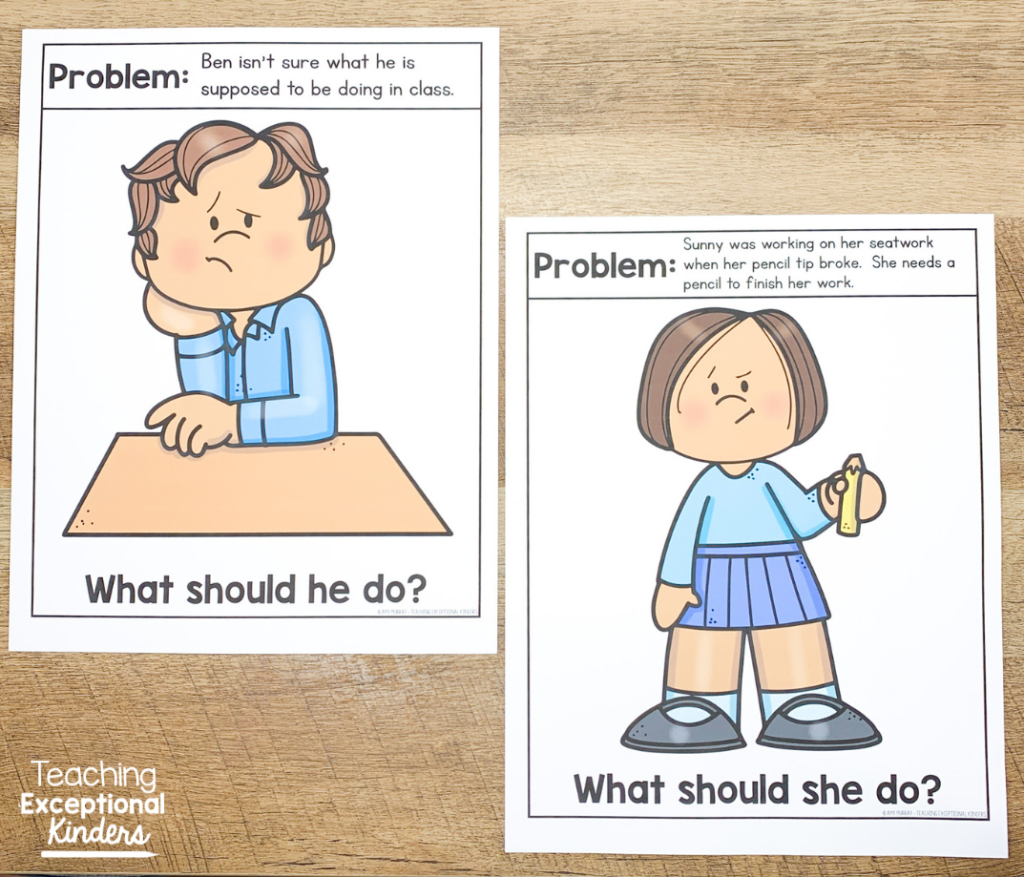
Since many of the challenges kindergartners experience can be procedural, it’s helpful to teach them appropriate solution options that fit within your classroom management system. For interpersonal problems, you might want to identify solutions that fit within your school’s conflict resolution procedures.
3. Teach the Steps of Problem Solving
Once you’ve identified the problems and solutions you’d like to discuss with your students, it’s time for the instruction! Teach your students the three easy steps of solving a problem:
First, they need to stop what they are doing. This helps them focus on the challenge they are facing.
Next, they need to think about the problem and possible solutions. Problems and solutions at school can often be different than those at home or other places.
Finally, they need to choose the best solution for their problem. They should consider how their solutions impact those around them.
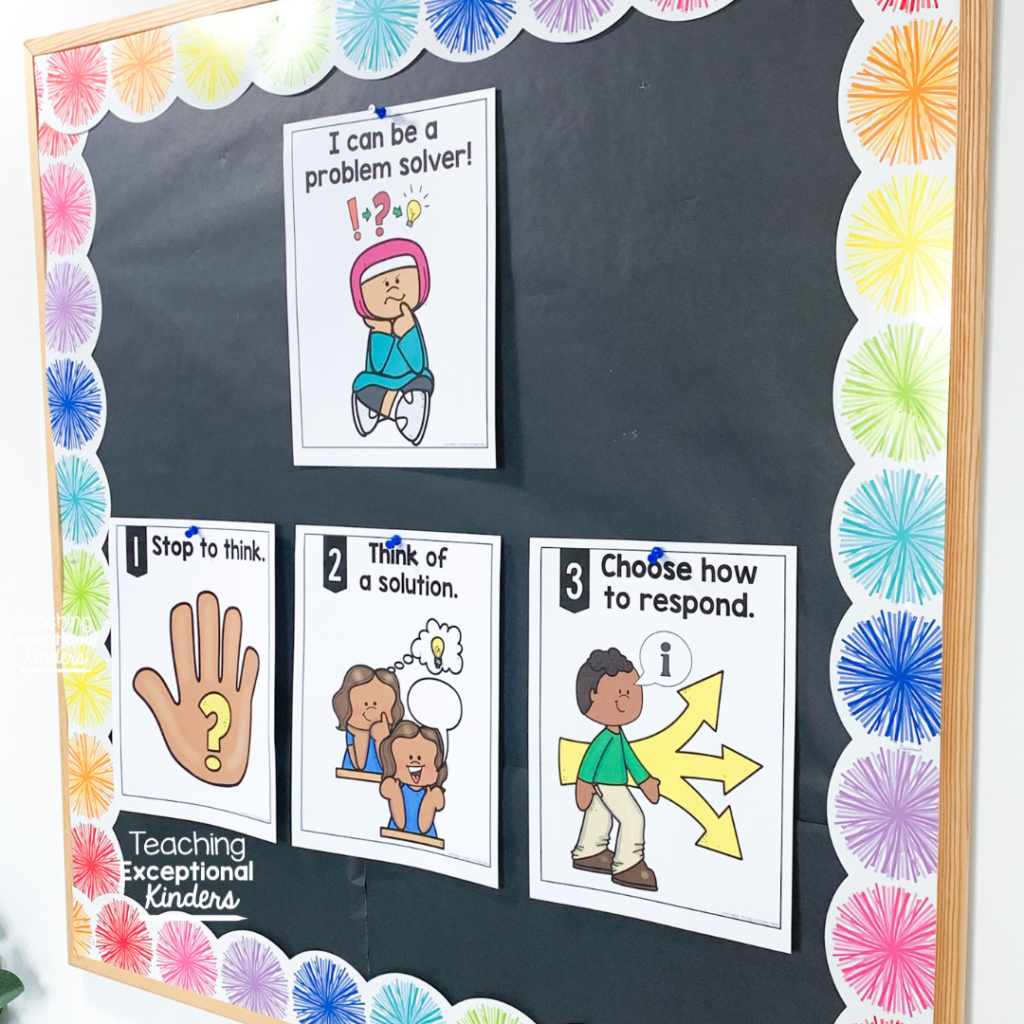
These simple steps are easy for students to remember so they are more likely to use them! It's a good idea to keep these reminders posted as visual support in the classroom so students can reference them throughout the school year.
4. Practice with Real-Life Scenarios
Now that you’ve introduced the steps to problem-solving, it’s time to practice using real-life examples and scenarios! Introduce a common problem that your students might experience in the classroom, on the playground, or even in the lunchroom. Discuss the problem so that all students can understand the challenge that needs to be addressed.
Once your students can identify the problem that needs to be solved, you can discuss possible solutions. It’s helpful for students to learn that there can be different ways to solve a problem. Sometimes students are hesitant to address challenges without adult intervention because they want to know what the “right” thing is to do.
Finally, it’s time for the students to choose the best solution. Students should think about how their solution will impact those around them and find the best option. You can discuss why this particular choice is the best option for the scenario.
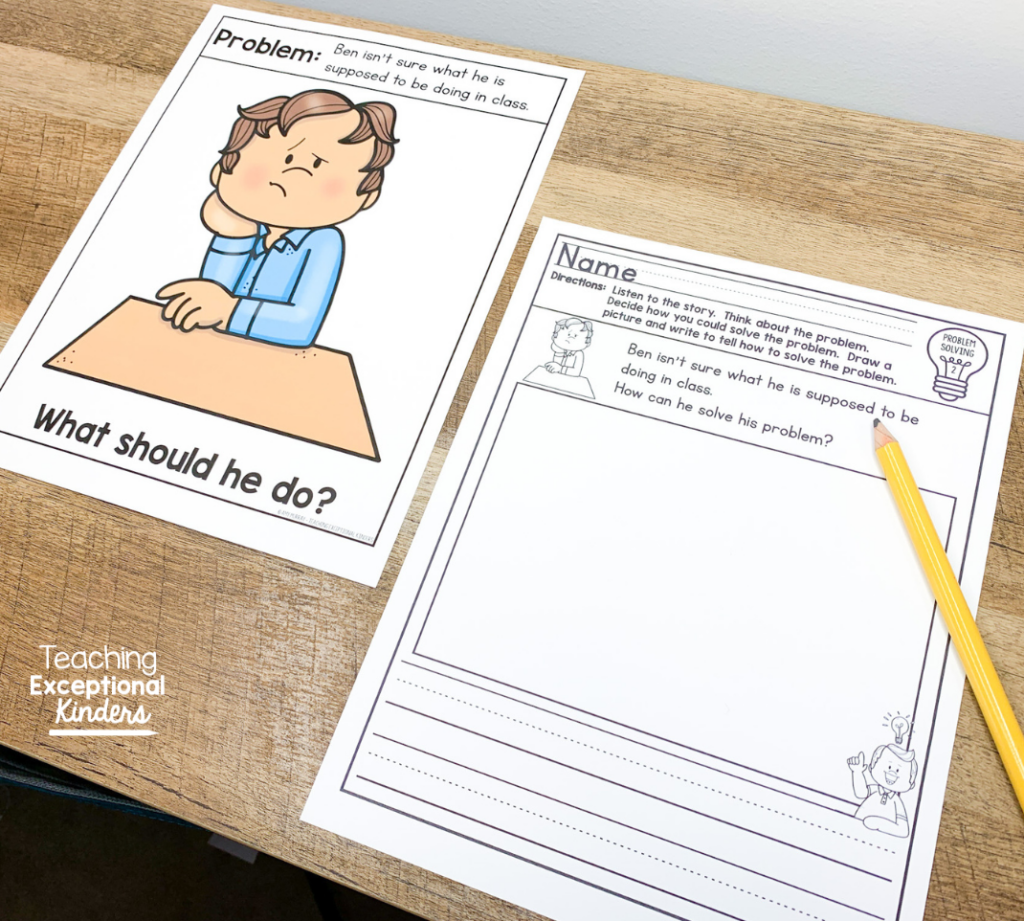
After discussing this real-life scenario together as a class, you can also encourage students to practice independently. Invite your students to complete an independent practice worksheet to show how they would solve the problem.
5. Repeat and Remind
It’s an ongoing process to teach students how to be more independent thinkers and problem solvers. This process of discussing real-life situations will be ongoing in your classroom. Take opportunities to repeat your instruction whenever you can!
Consider modeling for your students when there is a problem that you need to solve as a teacher. This helps them see that you go through the same three steps of problem solving! If a challenge arises that involves the whole class, you might also decide to discuss this together.
If you created an anchor chart during your class discussion of scenarios, you can keep those on display in your classroom. Problem solving posters can serve as a helpful reminder to your students when they find themselves in a challenging situation.
Problem Solving Printables for Kindergarten
Would you like to help your students become more independent in addressing their own challenges? I have created a resource to make it easy to teach problem solving in kindergarten.
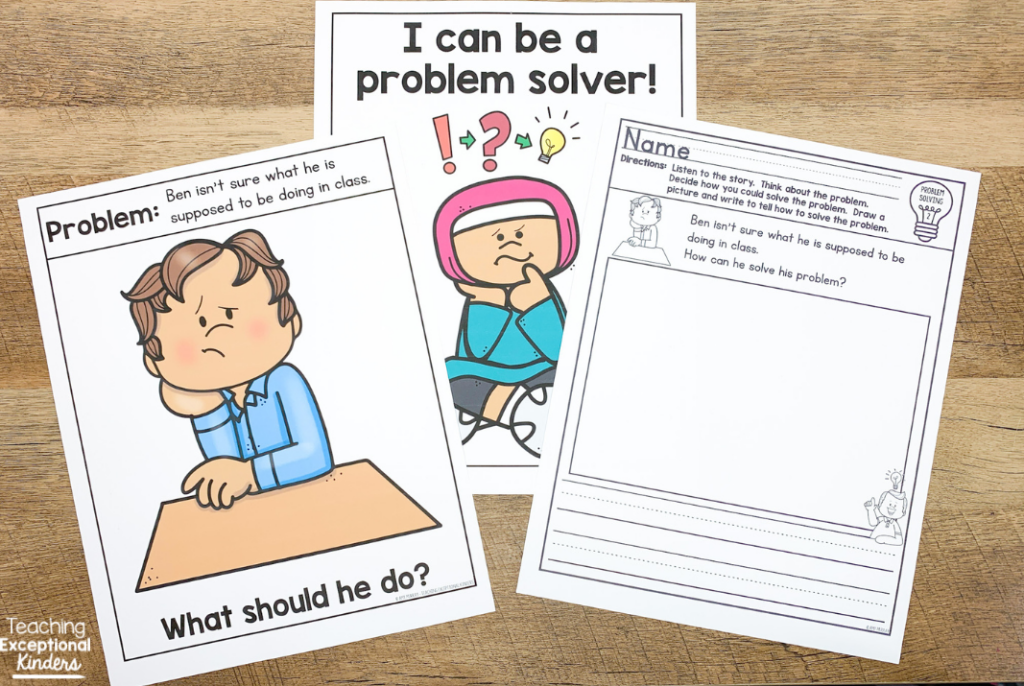
These posters and worksheets will help your students practice problem solving with engaging and relevant scenarios. Every classroom is different and each teacher sets specific classroom expectations. This resource is editable so that you can customize the problem solving scenarios to fit the needs of your classroom.
Would you like to take a closer look at everything included in this resource? You can find it in the Teaching Exceptional Kinders shop or on Teachers Pay Teachers.
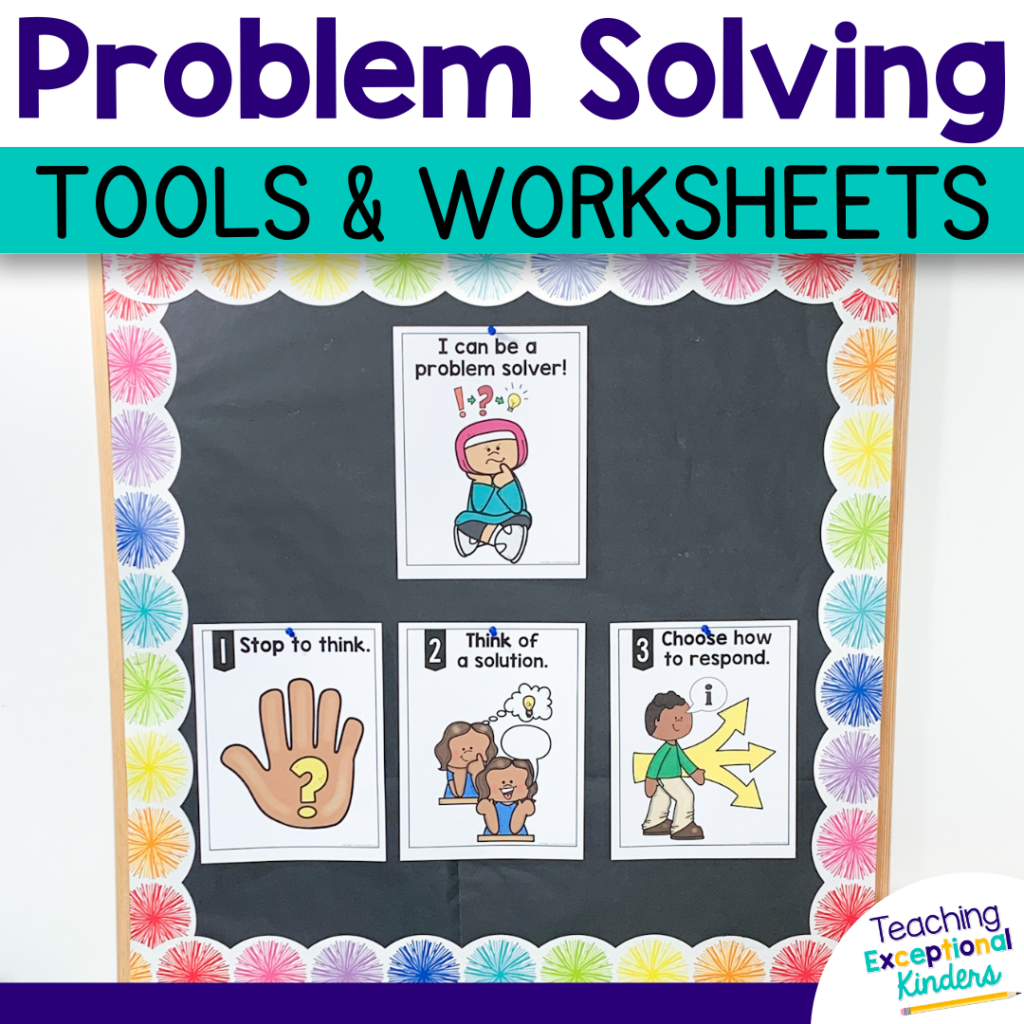
Save These Kindergarten Problem-Solving Ideas
Would you like to come back to this post later? Be sure to add this pin to your favorite teaching board on Pinterest. You’ll be able to quickly find these tips and resources whenever you need them!
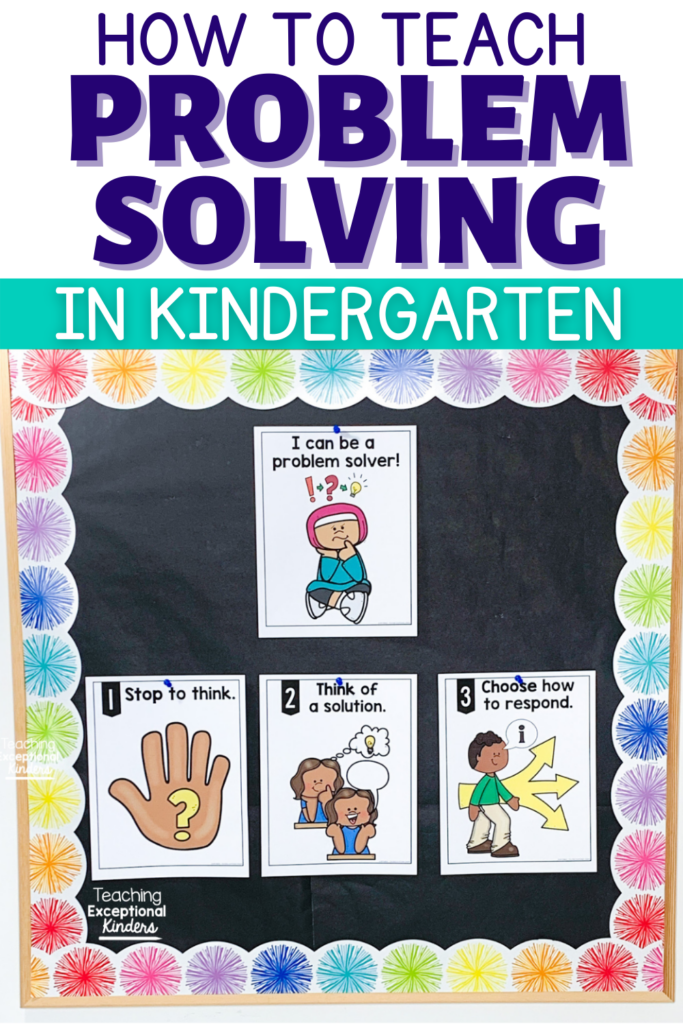
Amy
SITE DESIGN BY LAINE SUTHERLAND DESIGNS

